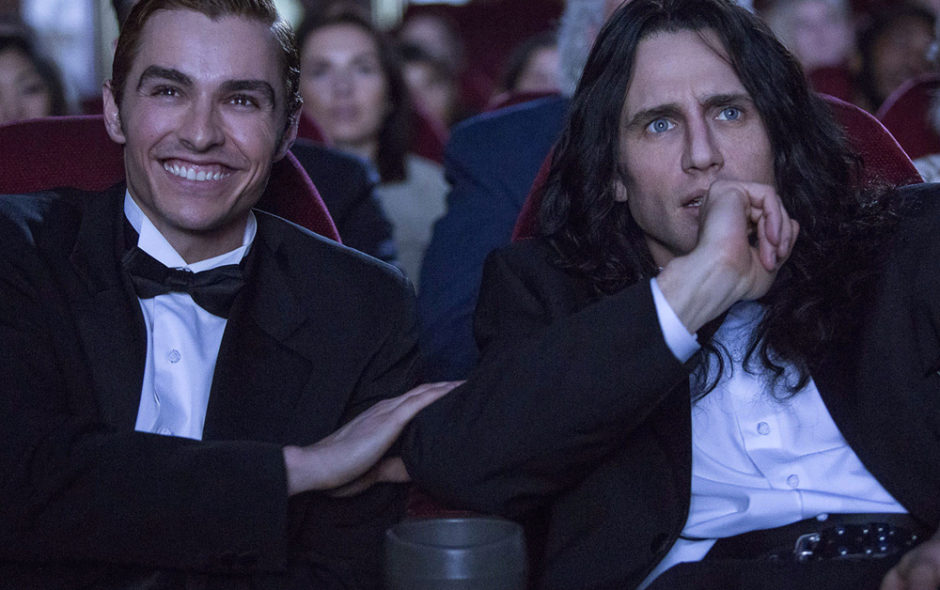The Disaster Artist is James Franco’s hilarious, compassionate meta-take on the making of cult classic film The Room, considered by many to be the worst movie of all time. In playing Tommy Wiseau – the mysterious and vaguely Eastern-European maniac who helmed and starred in his self-funded disaster – Franco’s dead-on performance of the untalented creator prompts the question: is Franco the most talented actor of our generation for perfecting an imitation of Wiseau, or is he the worst, given that he’s emulating bad acting?
The answer is, well, neither.
An alternative way of examining both Franco’s performance and his directorial efforts in The Disaster Artist is to look beyond the art of imitation – because if the film’s recreations of The Room had been five percent more or less accurate, it wouldn’t have mattered – and see it as a personal project for Franco to work through his understanding of the enigmatic Wiseau and the terrible emotional costs of stardom.
In The Disaster Artist, the oily-haired, pale-skinned, heavily accented Wiseau immediately reveals his shortcomings at a San Francisco acting class, where he meets Greg Sestero (David Franco), a struggling actor for different reasons. The young, attractive man lacks stage presence and confidence, something that Wiseau has in spades, and when the two hit it off, Wiseau puts himself and Sestero up in his Los Angeles apartment so they can pursue their dreams.
Only Sestero can put up with Wiseau’s bizarro megalomania, but the ultimate friendship deal-breaker arrives when Wiseau decides to make his own movie. Wiseau’s endless money allows the two to hire a production crew and make a legitimately professional, polished-looking film. But his scatterbrained approach to writing and directing is mostly why The Room is so much fun to hate-watch. Production members and audiences observe the film’s most bewildering elements: excessive landscape shots of San Francisco, narrative non-sequiturs (like one character’s self-mentioned breast cancer), cheesy, repetitive dialogue and torturously long sex scenes.Thematically, The Disaster Artist is about the importance of friendship in creative pursuits – something Franco clearly relates to, given the many projects completed by in collaboration with his buddies – most frequently, Seth Rogen, who plays a script supervisor in The Disaster Artist. The limits of friendship, however, are tested when ego battles arise in the competitive climate of Hollywood. The Disaster Artist is less interested in the nuance of Wiseau’s inner-most motivations, however, and more invested in the importance of bromance. Given Wiseau’s selfish actions in squashing Sestero’s career as it starts to take off, the film depicts a pretty predictable (if strange) case of friendship envy.
Franco does make Wiseau a sympathetic character – his desire to become well-respected in his profession, while immature and lacking awareness, are trials and tribulations many can relate to – but there is something cringe-inducing when Franco asks us to laugh at an immigrant who is rejected by casting agents for his accent. The cultural curiosities in Wiseau’s look – like wearing sunglasses all the time – are perhaps a product of his mysterious background, and his refusal to change anything about himself to succeed is strangely more inspiring than anything else.
If Wiseau had real talent and had become famous, his odd look could have become influential – revolutionary artists are often iconographic for their nonconforming looks – but his fame is based on the exact opposite of talent. In focusing so much on the Wiseau-Sestero friendship and the arduous creative process behind The Room, Franco makes a movie about the subjects he knows best, but fails to fully explore Wiseau’s character and address our collective psychological urge to know him better.

